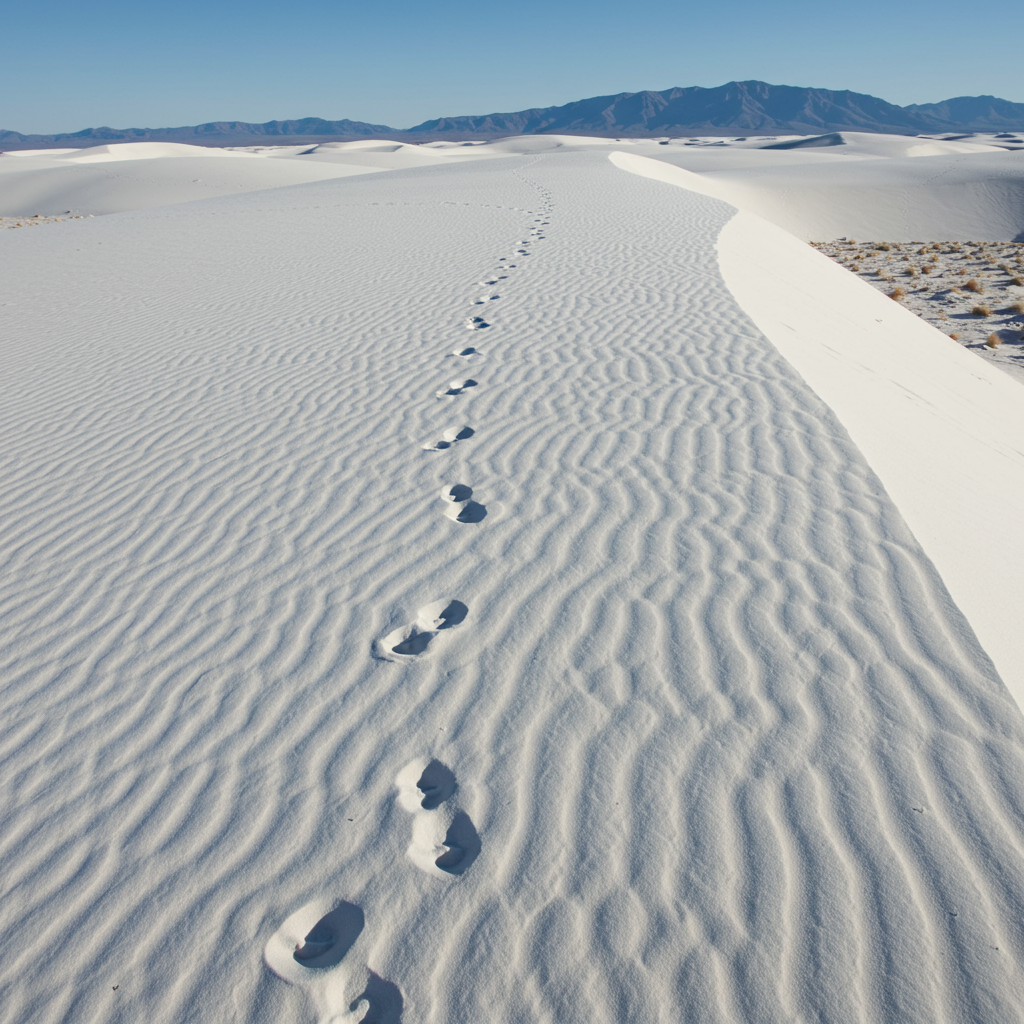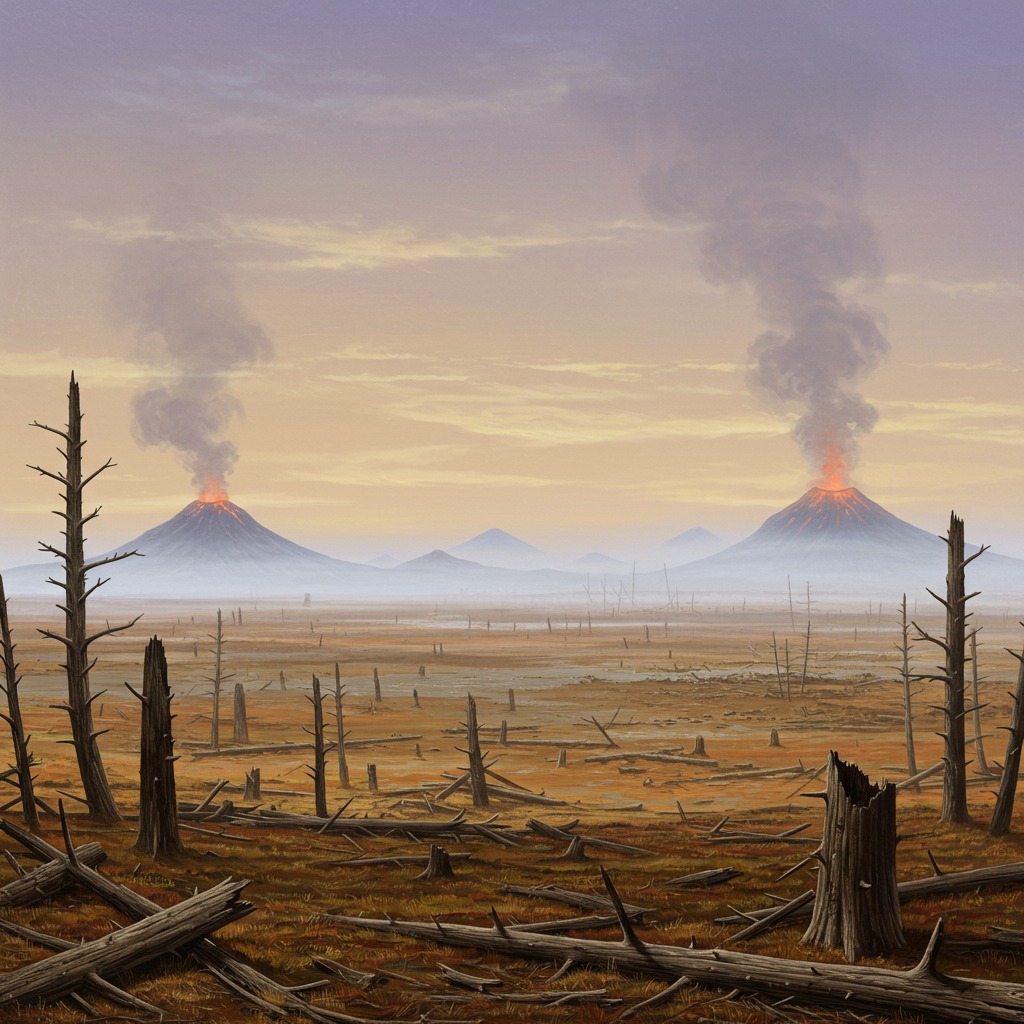Ancient human footprints preserved in the gypsum sands of White Sands National Park, New Mexico, have become a focal point in the debate over when humans first arrived in the Americas. For years, their age has been fiercely contested. While initial findings suggested a remarkable timeline placing humans in North America as early as 23,000 years ago – far earlier than traditionally accepted – skeptics questioned the dating methods.
Now, a new analysis adds significant weight to the argument for this much earlier date, reinforcing previous findings with independent evidence.
Unearthing an Ancient Presence
The discovery of fossilized human footprints at White Sands was first reported in 2021. These tracks, pressed into the ancient lakebed clays now buried under towering dunes, were initially dated by researchers to between 21,000 and 23,000 years old using radiocarbon dating of Ruppia cirrhosa seeds found within the footprint layers.
This date was revolutionary, suggesting people were present in the Americas during the peak of the Last Glacial Maximum, the coldest part of the last ice age. However, it immediately sparked scientific debate. Critics pointed out that aquatic plants like Ruppia can incorporate “old carbon” from their watery environment, potentially skewing radiocarbon dates to appear older than their actual age.
Building a Robust Timeline: Multiple Lines of Evidence
In response to this skepticism, researchers pursued alternative dating methods. A follow-up study in 2023 employed optically stimulated luminescence (OSL) dating on quartz grains (which determines when sediments were last exposed to sunlight) and radiocarbon dating of ancient conifer pollen from the footprint layer. Unlike aquatic seeds, pollen from terrestrial plants draws carbon directly from the atmosphere, avoiding the “old carbon” issue. These independent methods remarkably yielded dates consistent with the original findings: still within the 21,000 to 23,000-year range.
The latest research, published in Science, further strengthens this case. Led by Vance Holliday, a professor emeritus at the University of Arizona who was involved in the original discovery, the new study used radiocarbon dating on bulk organic sediment samples extracted from mud cores taken at the site. Analyzed by labs unaffiliated with previous studies, these mud cores provided dates for the trackways ranging between 20,700 and 22,400 years ago.
This latest analysis means there are now a total of 55 radiocarbon-dated samples from the footprint-bearing layers across three different materials – seeds, pollen, and mud – all converging on the 21,000 to 23,000-year timeframe. As Holliday noted, “You get to the point where it’s really hard to explain all this away… it would be serendipity in the extreme to have all these dates giving you a consistent picture that’s in error.”
A Glimpse into Ice Age Life: Evidence of Transport
Beyond just confirming presence, the White Sands site offers unique insights into the lives of these early inhabitants. Preserved alongside human footprints, researchers discovered linear drag marks extending for dozens of feet. These marks are interpreted as evidence that these ancient people used “travois” – makeshift sleds made of bound poles, historically used by Indigenous groups to transport goods, homes, and even people over land.
The size and spacing of the accompanying human prints suggest adults were likely pulling these travois, potentially with children or possessions loaded onto them. This discovery provides the first tangible evidence of how prehistoric humans transported heavy loads during their migrations and daily movements, a detail typically lost to time as wooden tools decay.
Reshaping the Story of the First Americans
If the 21,000 to 23,000-year-old dating holds definitively, it necessitates a fundamental revision of the timeline for the peopling of the Americas. The long-dominant “Clovis-first” model proposed that the first widespread human culture arrived around 13,000 years ago, entering North America via an ice-free corridor that opened as glaciers retreated after the Last Glacial Maximum.
White Sands, alongside other potentially older sites like Monte Verde in Chile (with evidence dating back perhaps 14,500 to 19,500 years), provides compelling evidence for a much earlier migration. The fact that White Sands features footprints makes the evidence particularly strong, as they are direct, in-situ proof of human presence at a specific time and place, unlike artifacts which can sometimes be questioned regarding their original context or human origin.
Complementary Evidence from Genetics
The story of early human arrival isn’t just told through archaeology. Genetic studies also support the idea of humans being in the Americas earlier than the Clovis period. Analysis of ancient human DNA and even the genetic history of human gut bacteria like Helicobacter pylori suggest complex population dynamics and migrations potentially dating back 20,000 to 24,000 years. This genetic evidence aligns with the possibility of migrations occurring before the traditional ice-free corridor opened, potentially via a now-submerged coastal route along the Pacific.
Lingering Questions
Despite the mounting evidence, some skepticism remains within the scientific community, with concerns still raised about potential old carbon issues, even in the mud samples. Additionally, a question acknowledged by the researchers is the lack of associated artifacts or evidence of settlements at the White Sands site from this period. However, researchers suggest that transient hunter-gatherers traversing a wetland might not have left behind extensive “debris fields” of valuable tools.
The White Sands footprints, now supported by converging dates from multiple methods and materials, represent powerful evidence that humans were exploring North America thousands of years earlier than previously imagined. This site continues to be critical in rewriting the complex and fascinating history of the earliest Americans.




